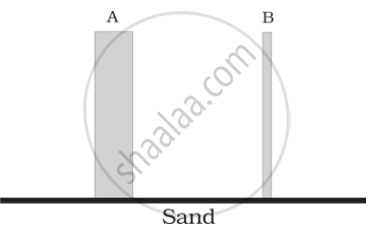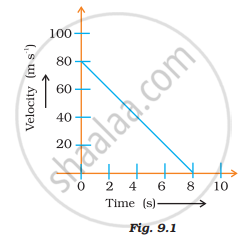Advertisements
Advertisements
Question
Two rods of the same weight and equal length have different thickness. They are held vertically on the surface of sand as shown in figure. Which one of them will sink more? Why?

Solution
As we know that pressure exerted by the body is inversely proportional to the area where force is applied. So, the thinner rod, i.e. rod B will sink more because it has less area of cross-section in contact with the surface, hence it will exert more pressure on the sand with respect to the rod A.
APPEARS IN
RELATED QUESTIONS
An archer stretches her bow while taking aim at the target. She then releases the arrow, which begins to move towards the target. Based on this information fill up the gap in the following statement using the following terms.
The type of force responsible for a change in the state of motion of the arrow is an example of a ______ force.
An inflated balloon was pressed against a wall after it has been rubbed with a piece of synthetic cloth. It was found that the balloon sticks to the wall. What force might be responsible for the attraction between the balloon and the wall?
Name the forces acting on a plastic bucket containing water held above ground level in your hand. Discuss why the forces acting on the bucket do not bring a change in its state of motion.
A rocket has been fired upwards to launch a satellite in its orbit. Name the two forces acting on the rocket immediately after leaving the launching pad.
One or more forces are acting in the following example. Name them.
Squeezing sugarcane juice with a squeezer: ______
One or more forces are acting in the following example. Name them.
Winnowing foodgrain: ______
Write an answer to the following question in your own words.
What is meant by weight?
Velocity versus time graph of a ball of mass 50 g rolling on a concrete floor is shown in Fig. 9.1. Calculate the acceleration and frictional force of the floor on the ball.

Which one of the following forces is a contact force?
Where do we apply a force while walking?
